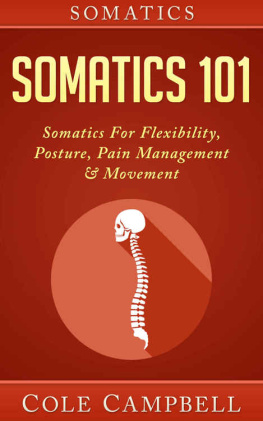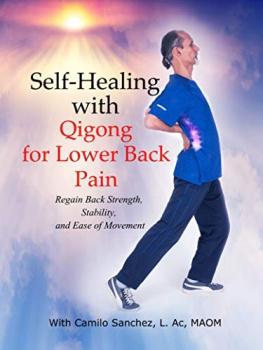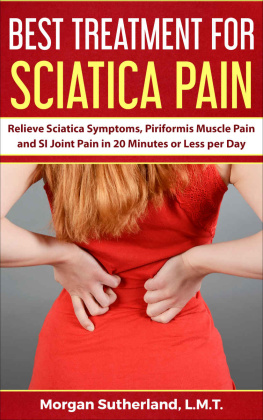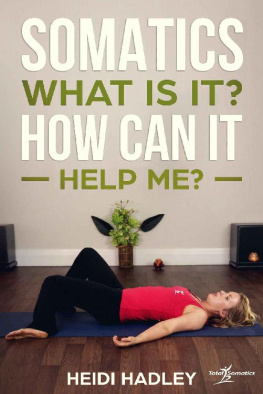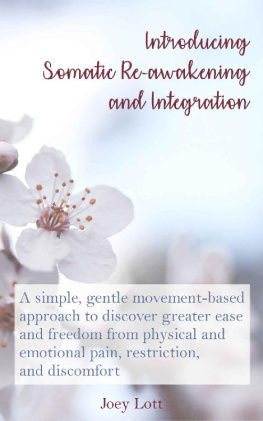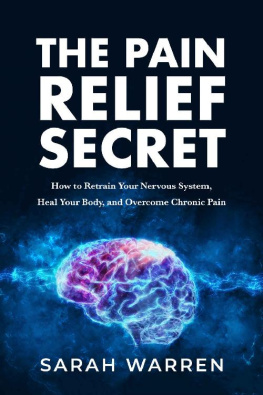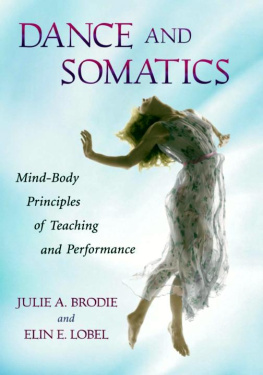SOMATICS
SOMATICS 101
SOMATIC FOR FLEXIBILITY, POSTURE, PAIN MANAGEMENT & MOVEMENT
COLE CAMPBELL
2016
COPYRIGHT NOTICE
All rights reserved.
No part of this publication may be reproduced, distributed, or transmitted in any form or by any means; including, photocopying, recording, or other electronic or mechanical methods, without the prior written permission of the publisher, except in the case of brief quotations embodied in critical reviews and certain other non-commercial uses permitted by copyright law.
DISCLAIMER
Although the author and publisher have made every effort to ensure that the information in this book was correct at press time, the author and publisher do not assume and hereby disclaim any liability to any party for any loss, damage, or disruption caused by errors or omissions, whether such errors or omissions result from negligence, accident, or any other cause.
This book is not intended as a substitute for the medical advice of physicians. The reader should regularly consult a physician in matters relating to his/her health and particularly with respect to any symptoms that may require diagnosis or medical attention.
CONTENTS
Introduction
Many people accept that as you age your body becomes stiffer and you will be less able to do the tasks that you currently take for granted. However, there is a study which suggests this is not the case. Somatics is the study of movement; it is believed that the modern, Western, way of life contributes too many posture and stiffness issues. These can be improved by altering the way you perceive your body and completing some key exercises as you move around.
Somatics was touched upon as early as the beginning of the twentieth century by the philosophers John Dewey and Rudolf Steiner; they both advocated the advantages of experiential learning. However, it was the work and study of Moshe Feldenkrais in the 1970s which was to lead to a wider knowledge and understanding of this field of research. These studies came to the attention of the Chairman of Philosophy at the University of Florida; Thomas Hanna. Moshes research and theories fitted in with the work that Hanna had been doing; his introduction to Moshe Feldenkrais shaped his life and reinforced his belief that that attitude towards your body can be changed to improve posture and movement; no matter how old you are.
Thomas Hanna had a good understanding of the rules of biofeedback; he added this understanding to what he had already discovered and to what he learned from Moshe. For several years in the early 1970s Hanna studied Moshes techniques and principles, by 1975 he had managed to get the first Feldenkrais training program established in America. At this stage he was the Director of the Humanistic Psychology Institute; during the same year he and Eleanor Hanna founded the Novato Institute for Somatic Research. It was thanks to his studies and teachings that people started to become aware of what somatics was.
He continued to study Moshe Feldenkraiss theories and added his own knowledge and research t them. It became increasingly apparent that many people developed the same postural difficulties, regardless of their age or vocation. Groups of people had the same characteristics although this was far more pronounced in Western civilisation than elsewhere in the world. This naturally led to the development of a variety of exercises which helped anyone to improve their mobility and flexibility. As his theory evolved these exercises would become known as Hanna Somatic Education.
Hanna has been described as a philosopher, a theologian, a professional writer and, even, as a revolutionary thinker. His studies led him to discover that there were far more people with movement issues and chronic pain in the Western world than there was in the less industrialized parts of the world. It was this belief that drove Hanna to find a new way of approaching aging; to return mobility and flexibility to those who followed his teachings. He spent several years studying the neurophysiology of development and control before he went on to develop what is now known as Clinical Somatic Education.
Clinical Somatic Education is designed as a teaching method; it involves a student learning to move in slow, precise ways. The movements must be a product of your conscious, not your sub-conscious and, with the aid of the instructor you will quickly discover a vastly improved range of mobility, flexibility and movement. Most people can master the basic techniques within twelve sessions; providing you continue to practice what you have learned, you should enjoy a far greater range of movement than what you thought was possible; for the rest of your life. In fact, the principles behind this are so easy to learn that it is possible t learn and understand the movements without a professional teacher.
Sadly Thomas Hanna died in a car accident two thirds of the way through his first somatics teaching course; thanks to the dedication of Eleanor Hanna, his students and the skill in which he organized his work and teachings, clinical somatic education has become available to anyone who wishes to improve their mobility and flexibility.
The guiding principle behind somatics is based on the understanding that a person is a whole individual; you are not a separate mind, body and soul. You are one entity, which is capable of growing, learning and evolving; as such anything is possible and healing is simply an extension of this; you are capable of healing yourself.
Somatics is based on a sound understanding of the human body and the neurological pathways that operate inside you. Every function you perform is controlled by your brain. Even sitting still your body will constantly be sending messages to your brain, via your nerves; this will be regarding how you are feeling and how you are moving. This information is processed by the brain and returned to your muscles and tendons via the same network of nerves.
Most movements you make are termed voluntary; this is because you are thinking about them, even if you are barely aware of it. Making yourself a drink is a conscious, voluntary decision. However, if you repeat the same process too many times your brain will see a habit developing and stoop processing the information. It will accept that you sit in a certain way, or walk a certain way. It can even recognize the weakness of a leg in plaster and accept that you will always walk more gently on the leg. This process is known as habituation and it is an essential part of your life. It allows your brain to handle all the mundane tasks without using any real effort, saving your brain power for the more important things in life. However, it is also this habitation which can become an issue. If you strain a muscle and continue to use it while it is healing you are likely to develop a new way of moving; this will compensate for any weakness or loss of movement while the part is healing. However, once it has healed, your brain will not automatically return to its previous, sub-conscious, way of moving, it will continue to operate in the new way. This will limit your movement unnecessarily. For example, if you break your leg and it is in plaster, you will be unable to bend it for several weeks. You body will remember this and, even when the cast has been removed, it will continue to resist bending it. For you to gain active and full use of your leg again, you will need to tell it to start bending again. This is one of the techniques which can be taught by clinical somatic education.
In effect, habituation is the bodys way of coping after trauma, however, this leads to tight muscles which are tight because habituation has taken effect and not because there is anything wrong with them anymore. It will quickly reach the point where your muscles are tight and will cause pain if you move a certain way. At first you put up with this pain, ultimately, you stop moving that way to prevent the pain from occurring. At that point your movement, flexibility and probably posture have all been compromised; your body will become stiffer and less mobile, just as you expected it to! It is a self-fulfilling prophecy!

